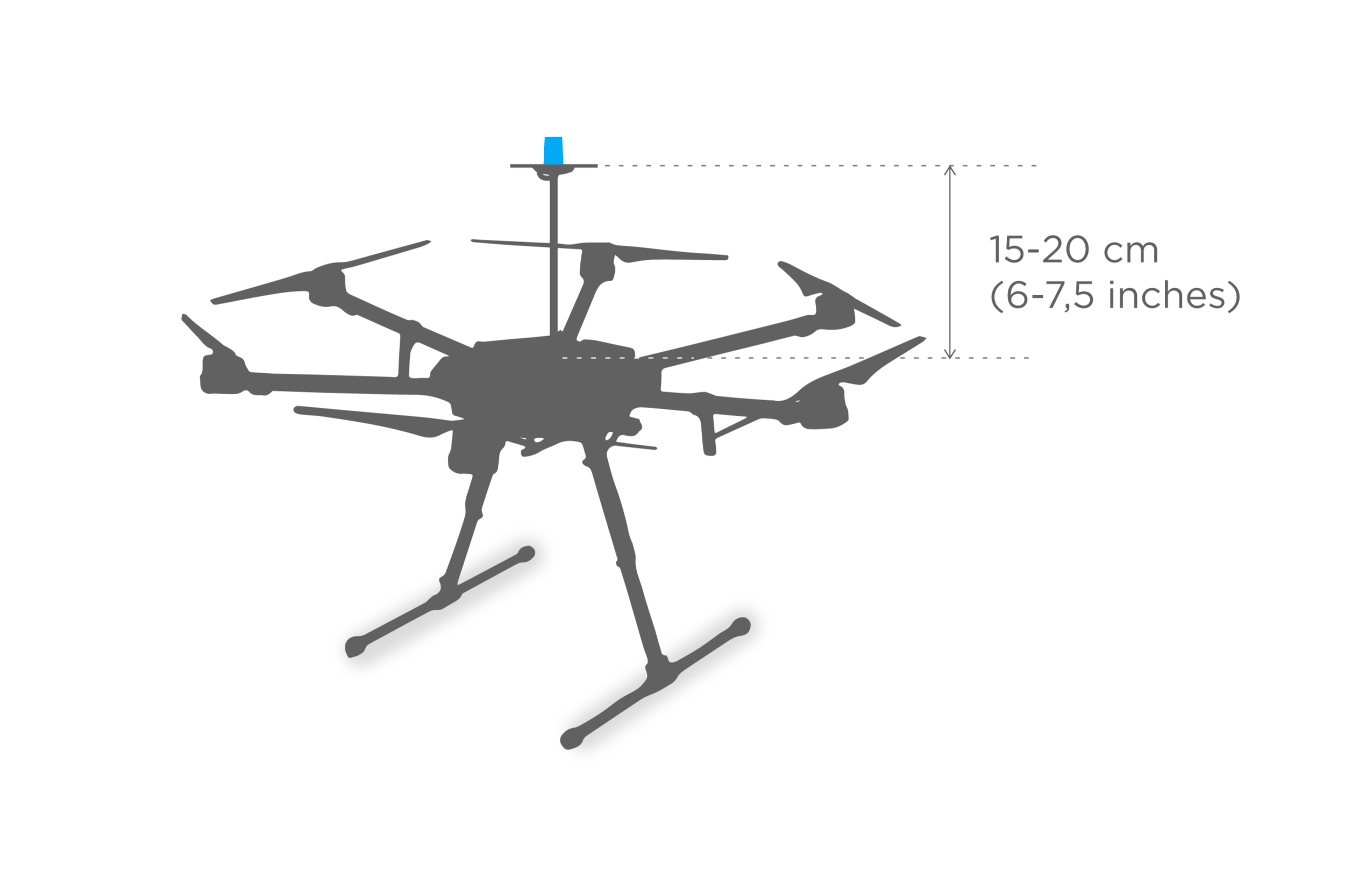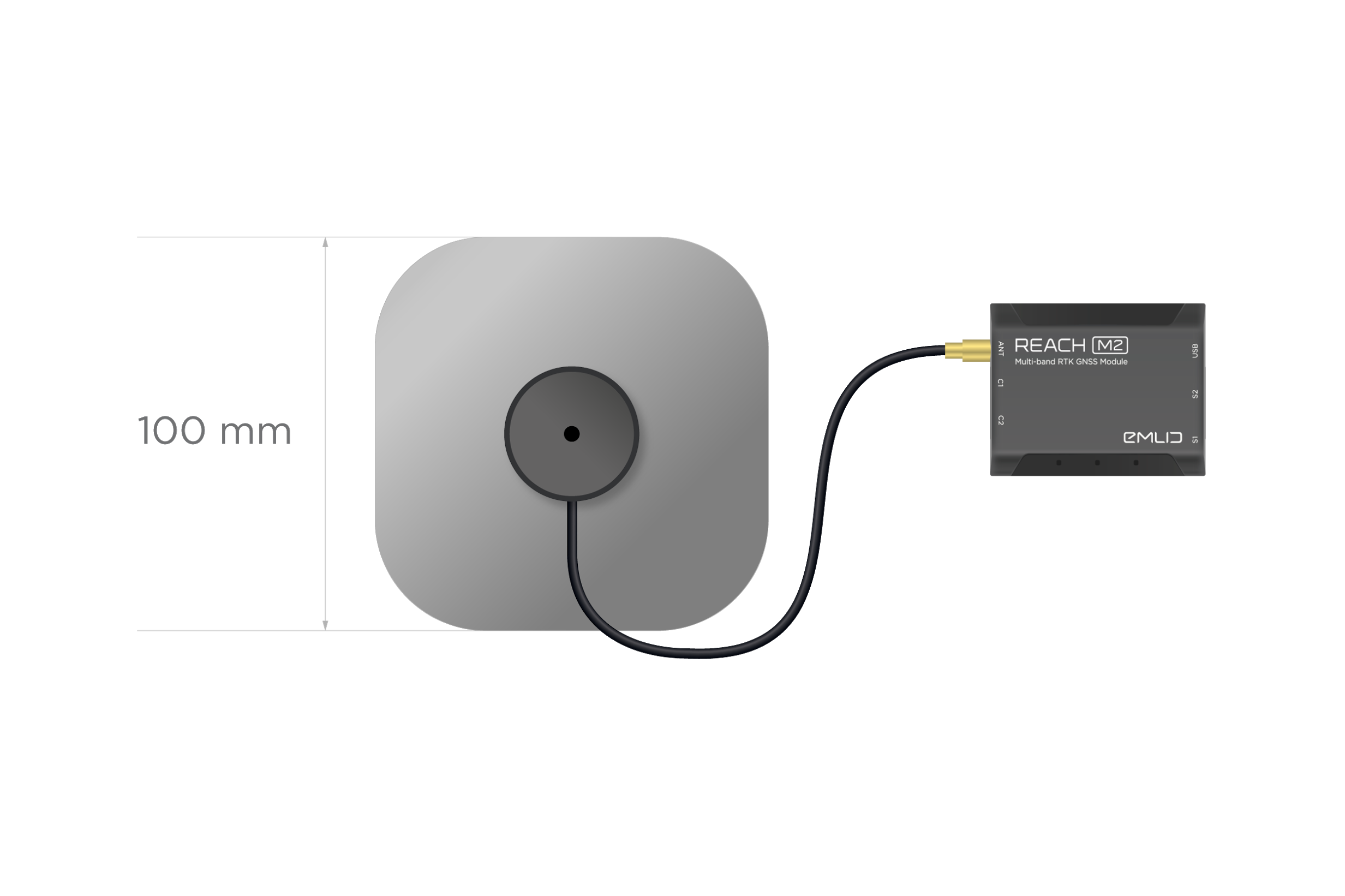Antenna placement
A well-placed antenna is essential for achieving good RTK positioning results.
You can place your smartphone near the window in your house and it will obtain GNSS coordinates after some time, but for RTK such environment will not be sufficient. For RTK to work there are special requirements for antenna placement.
Clear sky view without obstacles
An antenna needs to have a clear sky view 30 degrees above the horizon. There should be no obstacles that could block the view like buildings, trees, cars, humans, laptops, etc.

Examples of good environments for antenna placement:
-
field
-
top of the hill
-
the rooftop
Examples of bad environments for antenna placement:
-
indoors
-
urban areas
-
forest
-
close to the ground
No electronics nearby
Electronic devices may produce RF noise that could affect the reception of the GNSS signal. Keep all electronics (including the Reach itself) as far as possible from the antenna.
Ground plane
- Reach M2
- Reach M+
Helical antennas do not require ground planes. They are robust and demonstrate good performance.
Still, a ground plane can improve observation quality significantly. In some cases, it might be reasonable to mount a helical antenna on a ground plane for safety redundancy.
An antenna has to be placed on a ground plane which reduces multipath, provides shielding and improves signal reception. A ground plane is a conductive plate, it may be a piece of metal, a roof of a car, a metal roof of a building, etc.
Tallysman TW4721 requires ground plane no less than 70x70 mm (3x3 inches).
